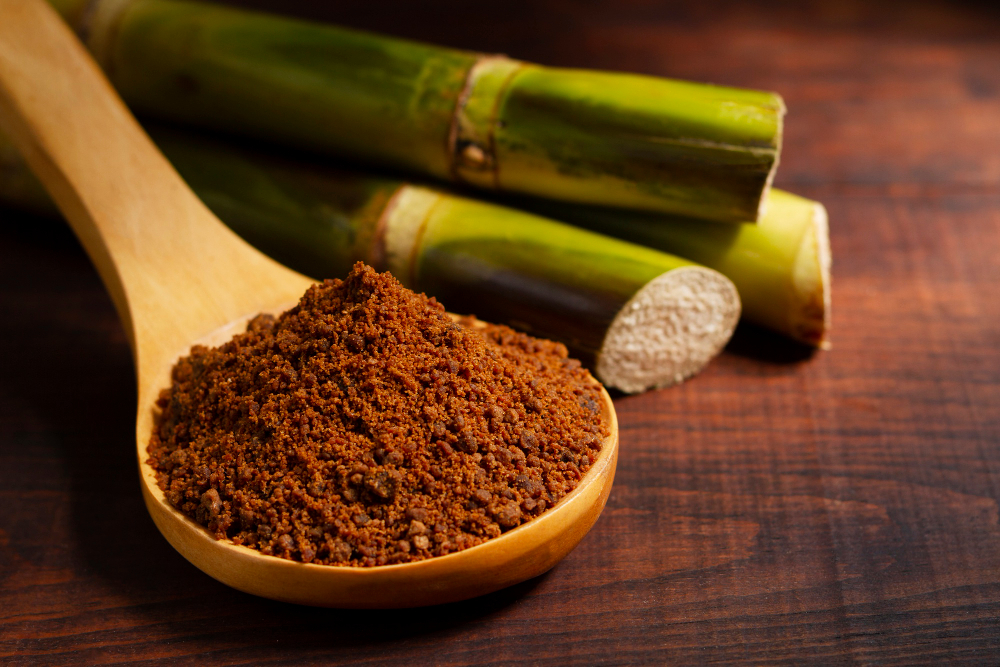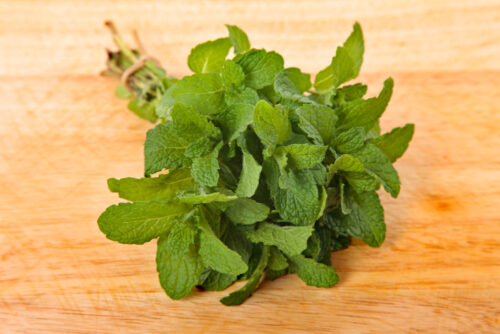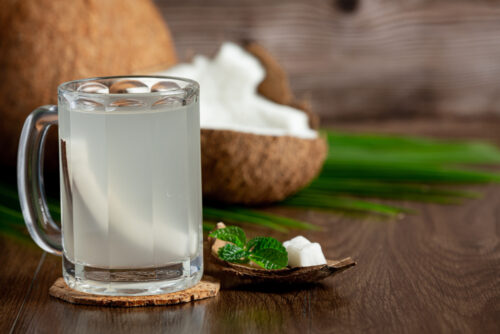Muscovado sugar is revered by chefs, bakers, and artisanal food producers for its rich flavor, deep molasses content, and moist, sandy texture.
As one of the least refined sugars available, it retains many of the minerals and antioxidants found in sugarcane, making it both a flavorful and slightly more nutritious alternative to refined white sugar.
However, muscovado isn’t always easy to find, and its price point or availability might lead you to seek alternatives.
This guide examines the most effective muscovado sugar substitutes in-depth, comparing each one in terms of flavor, texture, chemistry, and culinary applications.
What Is Muscovado Sugar?
Muscovado sugar is an unrefined cane sugar known for its dark color, moist texture, and complex flavor dominated by natural molasses.
Unlike white or brown sugar, muscovado isn’t centrifuged during processing, meaning the molasses isn’t removed.
This gives it a gritty, wet-sand consistency and a taste that’s rich, earthy, and layered with notes of toffee and bittersweet caramel.
Often considered an artisanal product, it’s traditionally made by boiling down sugarcane juice and letting it crystallize without heavy industrial refinement.
The result is a sugar that not only sweetens but adds depth, body, and a distinctive flavor to baked goods and sauces.
Light vs. Dark Muscovado and Culinary Uses
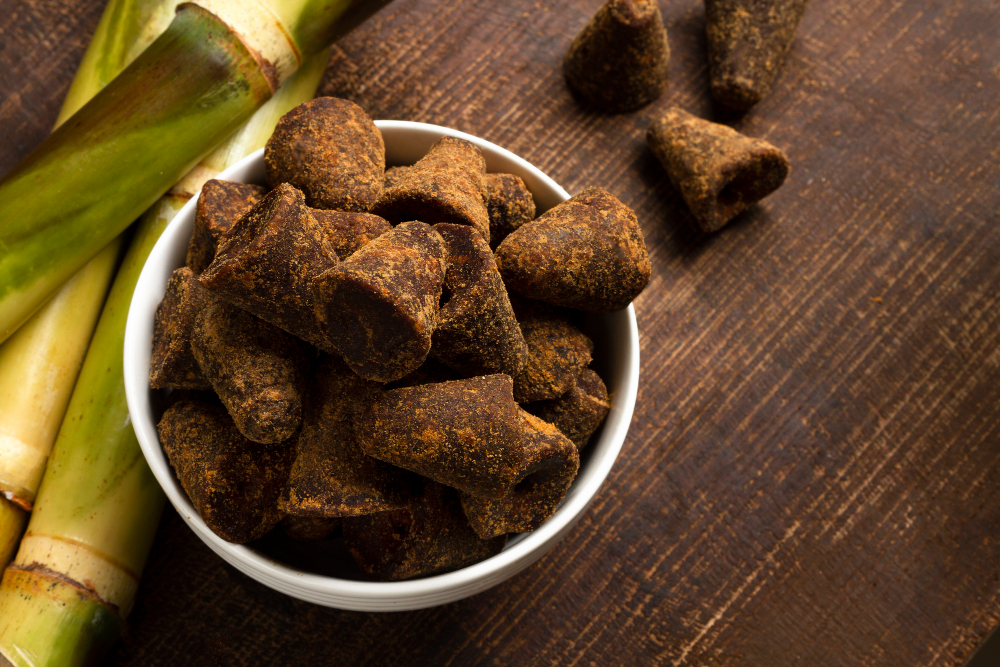 Muscovado comes in two main types: light and dark. Light muscovado retains a moderate amount of molasses and offers a milder flavor, while dark muscovado is more intense and robust due to its higher molasses content.
Muscovado comes in two main types: light and dark. Light muscovado retains a moderate amount of molasses and offers a milder flavor, while dark muscovado is more intense and robust due to its higher molasses content.
Both are ideal in recipes where sugar is intended to contribute both flavor and sweetness. Muscovado excels in chocolate-based desserts, gingerbread, spiced cakes, marinades, and barbecue glazes.
While it contains trace minerals and antioxidants, its primary appeal is flavor, not health. Used properly, it brings a richness no refined sugar can match, making it a prized ingredient among bakers and chefs alike.
Significance of Muscovado Sugar
Muscovado sugar is an unrefined cane sugar that retains its natural molasses, resulting in a dark color, moist texture, and a deep, toffee-like flavor.
It is minimally processed, rich in character, and often used in both sweet and savory dishes to add complexity and depth.
Due to its bold taste and slightly higher mineral content, muscovado sugar is not only valued for its unique qualities but also serves as an excellent substitute for refined white or brown sugar in recipes where a richer flavor and increased moisture are desired.
White Sugar and Molasses: The Closest Homemade Match
One of the most effective ways to replicate muscovado sugar at home is by combining white granulated sugar with molasses.
This substitute works not because white sugar resembles muscovado, it doesn’t, but because molasses is the very component that defines muscovado’s flavor, texture, and color.
By reintroducing molasses into an otherwise neutral sugar base, you can create a blend that mimics both the moisture and the depth of flavor found in true muscovado.
For those who bake frequently or have a thorough understanding of ingredient behavior, this combination enables complete control over the final outcome.
Adjusting the amount of molasses allows you to create either a lighter or darker version of the substitute, depending on the recipe’s requirements.
In texture, this mix begins to imitate muscovado’s distinct, wet, sand-like consistency. In flavor, it impressively replicates the bold, slightly bitter, toffee-like notes for which muscovado is known.
However, precision matters: too much molasses can overwhelm a batter or disrupt baking chemistry, while too little results in a flat, sweet sugar without depth.
The key is achieving balance, gradually blending the two until the sugar darkens, thickens, and clumps slightly, just as muscovado does.
Dark Brown Sugar: The Everyday Stand-In
Is muscovado sugar the same as brown sugar? No, but dark brown sugar is often the most convenient and accessible substitute for muscovado.
Unlike white sugar, which is stripped of its molasses entirely, dark brown sugar has some molasses added back during processing, usually around 6.5%, which brings it closer in flavor and texture to muscovado than you might expect.
While it lacks the gritty coarseness and earthy depth of unrefined muscovado, it offers a mellow caramelized profile that performs well in a wide range of recipes.
Its moisture content is slightly lower but still significant enough to retain softness in baked goods and contribute to chewiness in cookies and brownies.
In terms of appearance, it has a similar rich brown hue and clumps modestly, mimicking the visual cues of muscovado.
For those who aren’t chasing exact authenticity but still want a functional alternative that won’t compromise flavor significantly, dark brown sugar is often the ideal choice.
It blends seamlessly into doughs and batters, dissolves well in sauces and drinks, and behaves predictably in high temperatures, making it a versatile ingredient in both sweet and savory applications.
Brown Sugar and Added Molasses: A Precision Blend
For bakers seeking a substitute with greater control over taste and texture, combining commercial brown sugar with additional molasses provides a customizable solution.
Unlike white sugar, brown sugar already contains a small amount of molasses, so adding more intensifies its resemblance to muscovado.
This approach is constructive when you want to fine-tune the substitute to replicate either light or dark muscovado or even something in between.
The added molasses thickens the sugar blend, increases its moisture content, and darkens both the color and flavor.
The result is a dense, sticky mixture that introduces the same aromatic punch muscovado contributes to baked goods, sauces, or glazes.
Because this substitute already starts with a sugar base that is more chemically similar to muscovado, it adapts well to recipes requiring rich flavor and a bit of chew.
However, care must be taken when balancing moisture. Adding molasses without adjusting the other liquids in a recipe may lead to overly wet batters, uneven baking, or textural imbalance.
To succeed, the molasses must be worked into the brown sugar thoroughly and gradually, ensuring that the mixture maintains a structure that mimics muscovado’s consistency without becoming syrupy or unstable.
Brown Sugar and Honey: For Moisture and Natural Sweetness
In situations where molasses is unavailable or undesired, honey presents an alternative that, when combined with brown sugar, can approximate some of muscovado’s moisture and complexity.
Honey adds not only sweetness but acidity and depth, which helps simulate the rounded, warm profile muscovado sugar brings to recipes.
This substitute is especially useful in baking, where the inclusion of honey can interact beneficially with leavening agents like baking soda, creating lighter, airier textures in cakes or muffins.
When mixed thoroughly with brown sugar, honey enhances the sweetness of the sugar and adds a subtle floral or fruity note, depending on the type of honey used.
This added moisture helps prevent baked goods from drying out too quickly and can enhance richness in soft-textured bakes such as gingerbread or molasses cookies.
However, because honey is a liquid sugar, it’s essential to compensate for its water content by slightly reducing other liquids in the recipe. If not balanced carefully, the result may be overly moist or prone to collapsing.
For those who value natural ingredients and are willing to adjust proportions, this pairing offers a unique, health-conscious alternative that works exceptionally well in rustic or warmly spiced recipes.
Brown Sugar and Maple Syrup: For a Subtly Complex Profile
Maple syrup provides another compelling alternative to molasses when mixed with brown sugar. This combination leans into the more delicate and aromatic side of muscovado’s flavor profile, substituting molasses’s intensity with maple’s earthy, woody sweetness.
When the two are appropriately blended, they produce a substitute with enhanced flavor complexity and moderate moisture.
While maple syrup lacks the bitterness and heaviness of molasses, it introduces its own nuanced depth that pairs beautifully with chocolate, spices, and nuts.
The moisture that maple syrup adds can help improve the texture of cakes, quick breads, or breakfast items like muffins and pancakes.
However, it may not withstand the high-heat demands of caramelization in the same way true muscovado does.
Like other liquid sweeteners, maple syrup must be balanced carefully to avoid overly loose batters or soggy dough.
A minor reduction in the recipe’s other liquids typically solves this issue. When high-quality, pure maple syrup is used, this substitute becomes not just a workaround but a sophisticated flavor enhancer in its own right.
Jaggery: The Traditional, Unrefined Powerhouse
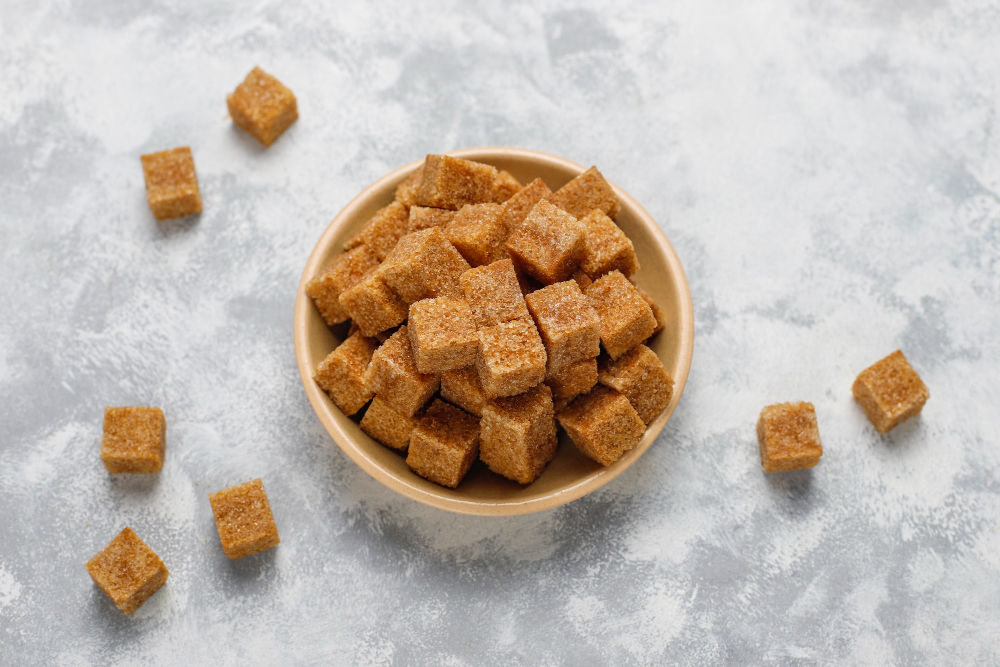
Jaggery stands out as one of the most authentic natural alternatives to muscovado sugar. Like muscovado, jaggery is made from sugarcane juice that is boiled and solidified without the removal of molasses, resulting in a deep, intensely flavored sweetener with a dense and crumbly texture.
Jaggery often comes in blocks or cakes and must be grated or chopped before use, which adds a tactile, old-world element to cooking or baking.
In flavor, jaggery is bold, sometimes smoky, and always earthy, with its sweetness layered with bitterness, making it a fitting stand-in for the complexity of muscovado.
In terms of moisture, jaggery contains enough to significantly impact texture, although this can vary from batch to batch depending on its processing method.
This substitute is especially beloved in traditional South Asian, African, and Caribbean cuisines, where it is used in everything from confections to savory sauces.
Due to its strong flavor, jaggery should be used thoughtfully, especially in Western baking recipes where its intensity may overpower more delicate flavors.
Nevertheless, for those seeking richness and authenticity, jaggery is one of the most compelling substitutes for muscovado available.
Demerara Sugar: A Dry, Milder Alternative
Demerara sugar offers a dramatically different experience from muscovado, yet it remains a viable substitute in many cases.
Derived from partially refined sugarcane, demerara has large, dry, golden crystals with only trace amounts of molasses.
It lacks muscovado’s sticky, sandy texture and deep flavor, but it compensates with a mild toffee note and a satisfying crunch.
Its dryness means it doesn’t contribute the same moisture to recipes, which makes it less suitable for bakes that rely on muscovado for chewiness or softness.
However, demerara shines in recipes where sugar is added as a topping or stirred into liquids, such as in oatmeal, coffee, or fruit crisps, where its texture provides added dimension.
In baking, it can be used when muscovado is specified as a sweetener rather than a structural component.
Its flavor won’t transform a recipe, but in low-stakes applications, demerara provides a clean, slightly molasses-tinted sweetness that performs reliably.
Turbinado Sugar: A Balanced, Light-Flavored Substitute
Turbinado sugar, often labeled as “raw sugar,” is another partially refined sugar that retains some natural molasses.
Lighter in color and subtler in flavor than muscovado, turbinado is typically used where a cleaner, more restrained sweetness is desired.
Its coarse granules and dryness make it a less-than-perfect match for muscovado in terms of moisture or density, but it can work well in recipes where texture is not a critical factor.
For example, it dissolves adequately in liquids and adds a mellow sweetness to beverages, sauces, and syrups.
When used in baked goods, turbinado lacks the chewiness muscovado imparts, so recipes may need added moisture from other ingredients to compensate.
Still, for those who want natural cane sugar with a whisper of molasses and a light, crunchy texture, turbinado is a dependable substitute.
Panela: Latin America’s Rich and Rustic Equal
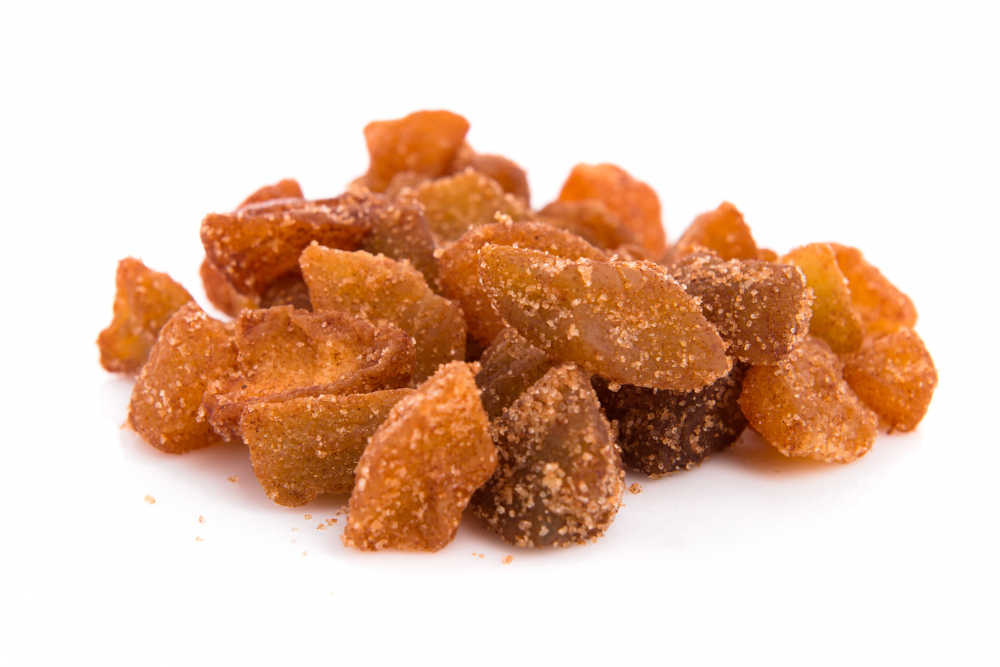
Panela, also known as piloncillo in Mexico, is an unrefined cane sugar that closely resembles muscovado in both process and character.
Produced by boiling sugarcane juice until it solidifies into blocks or cones, panela retains all its molasses, giving it a dark color, a sticky consistency, and a deep flavor.
Its intensity makes it an excellent muscovado replacement, especially in recipes with bold flavors, such as chocolate or spices.
Panela must be grated or shaved before use, which adds an extra step to the preparation. Still, the payoff is an intensely flavorful sugar that integrates well into both sweet and savory dishes.
From spiced hot drinks to slow-simmered glazes, panela behaves much like muscovado, bringing a similar sense of authenticity and richness.
In Western baking, it can substitute muscovado almost one-to-one, though its slightly firmer texture may require additional dissolving time in batters and doughs.
Coconut Sugar: A Dry, Nutrient-Rich Option
Although it differs in source and structure, coconut sugar can serve as a substitute for muscovado when nutrition and a lower glycemic index are priorities.
Took from the sap of coconut flower buds, this sugar is dry and fine-grained with a subtle caramel flavor.
It lacks the moistness and intensity of molasses-rich sugars, which means it does not replicate muscovado’s texture or bold taste.
However, it brings a unique flavor to baked goods and can add a delicate sweetness that complements rather than dominates.
Because it doesn’t hold moisture the way muscovado does, recipes using coconut sugar may require minor tweaks, such as the addition of oil, yogurt, or extra eggs to restore balance.
While not a direct substitute in every sense, coconut sugar is a suitable alternative in many recipes, particularly when a milder, healthier approach is desired.
Final Thoughts: Choosing the Right Substitute
Substituting muscovado sugar successfully depends on more than taste. It involves understanding its role in your recipe.
Is it providing moisture? Adding complexity? Building texture or color? Once you define what muscovado is doing, you can choose a substitute that fulfills that specific purpose.
Whether you blend molasses into white sugar for precision, use dark brown sugar for convenience, or turn to jaggery or panela for authenticity, each option brings its own strengths and limitations.
By adjusting for moisture and sweetness and understanding the flavor profiles each substitute contributes, you can maintain the integrity of your dish, even without the real thing.

